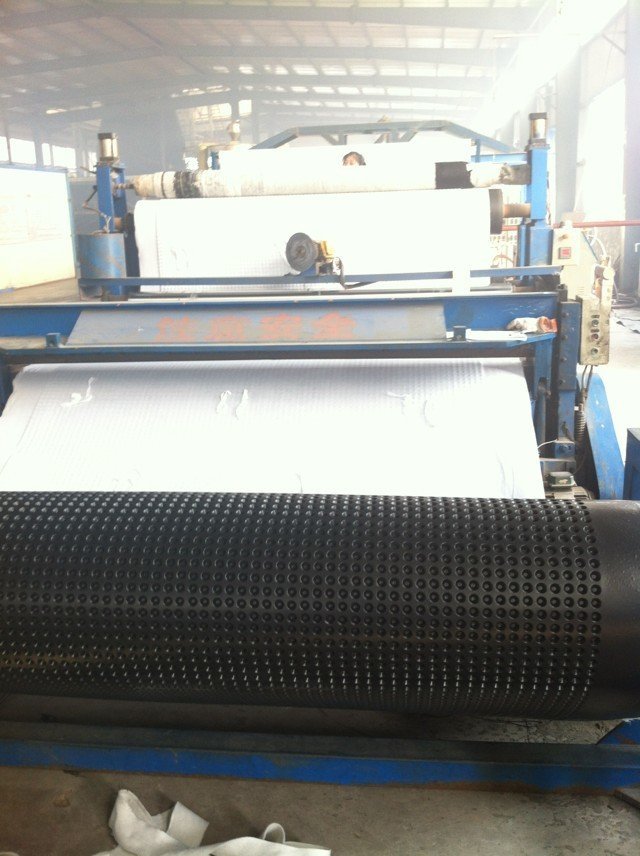- Understanding the Role of Geomembrane Liners in Waste Management
- Innovations in Geomembrane Liners for Water Management
- Geomembrane Liners: A Comprehensive Guide
- The Future of Geomembrane Liners in Civil Engineering
- Geomembrane Liners: Enhancing Landfill Stability
Manager:
WhatsApp:+86 177 0135 2670
Tel:+86 177 0135 2670
Email:marketing@okorder.com
Address:3rd Floor, No.2 Building, No.1 Sanlihe Road
HDPE Geomembranes: A Barrier Against Leachate Migration
hdpe Geomembranes, a term that might sound like a mouthful to some, are actually quite fascinating when you delve into their applications and benefits. These versatile synthetic materials are designed to provide a robust barrier against the migration of leachate, a liquid that forms when water percolates through waste in landfills. But why is this important, and how do HDPE geomembranes achieve this? Let's explore together in a more casual and engaging manner, shedding the formal tone and embracing a conversational style.

The Problem with Leachate
Leachate, as mentioned, is the unwanted byproduct of landfills. It's not just an environmental nuisance; it's a serious concern. Leachate contains a cocktail of contaminants, including heavy metals, organic compounds, and pathogens, which can seep into the surrounding soil and water sources if not properly contained. This poses a significant risk to both ecosystems and human health.
Enter HDPE Geomembranes
Thankfully, HDPE geomembranes come to the rescue. High-Density Polyethylene (HDPE) is a type of plastic known for its durability, flexibility, and resistance to chemicals and UV light. These properties make it an ideal candidate for creating barriers that can withstand the test of time and the elements.
How They Work
Imagine a giant, impermeable blanket laid out over a landfill site. That's essentially what an HDPE geomembrane does. It creates a physical barrier that prevents leachate from escaping and contaminating the surrounding environment. But it's not just about blocking; it's also about preventing the leachate from even forming in the first place. HDPE geomembranes are designed to minimize water infiltration and thus reduce the amount of leachate generated.
The Benefits Beyond Barriers
While the primary function of HDPE geomembranes is to act as a barrier, their benefits extend beyond that. They are also cost-effective, requiring less maintenance than other containment solutions. They are easy to install, which means less downtime and disruption at the landfill site. And, as an added bonus, they are recyclable, contributing to a more sustainable approach to waste management.
Installation and Maintenance
The process of installing an HDPE geomembrane is quite straightforward. It involves unrolling the material over the prepared landfill site, ensuring there are no wrinkles or folds that could compromise its integrity. The seams are then heat-welded, creating a seamless barrier. Maintenance is minimal, with regular inspections to check for any signs of wear or damage, ensuring the geomembrane continues to perform its vital role.
The Future of Waste Management
As we look to the future, the role of HDPE geomembranes in waste management is set to become even more crucial. With increasing global waste production and the need for more sustainable solutions, these geomembranes offer a reliable and effective method of containment. They are a testament to human ingenuity in finding practical solutions to environmental challenges.
Wrapping Up
In conclusion, HDPE geomembranes are more than just a barrier; they are a symbol of our commitment to protecting the environment and ensuring the health and safety of our communities. They may not be the most glamorous topic, but their importance cannot be overstated. So, the next time you think about waste management, remember the unsung heroes – the HDPE geomembranes – quietly doing their job, one landfill at a time.
- Previous:HDPE Geomembranes: The Essential Component for Fish Farming Ponds
- Next:HDPE Geomembranes: A Protective Layer for Industrial Ponds






